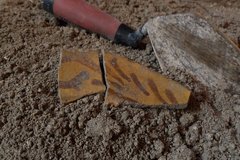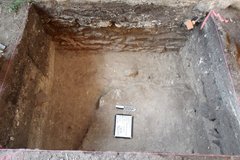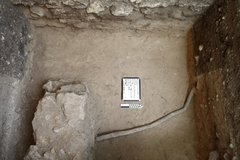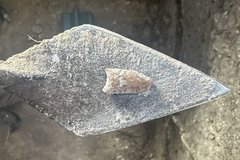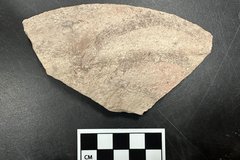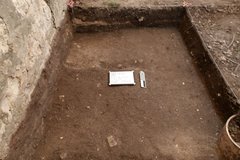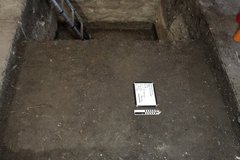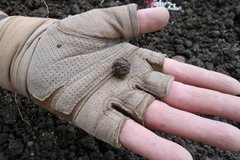Archaeologists worked in four excavation units this week- EUs 8, 10, 14, and 19- and EU-15 was idle. EUs 14 and 19 are new units that were started this week.
In EU-8, archaeologists reached a depth of approximately 90 cm below surface. Archaeologists encountered a compacted caliche surface that extended into multiple levels. Additionally, two soil types were identified- the caliche-rich surface deposit and also a clay-mottled deposit. The clay-mottled deposit was restricted to the northern section of the unit. Artifact density remains high in this unit, with several ceramic fragments. A large, broken lead glaze rim sherd, likely Galera ware, was recovered in level 8 (100-110 cmbd).

